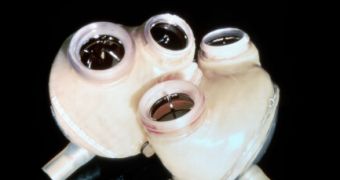Doris Taylor, a cardiac researcher, director at the Center for Cardiovascular Repair, may very well be the first scientist in the world to have ever built an artificial heart. Using only organic rat cells, she was able to make a dead heart beat and grow again, all in a bioreactor at the University of Minnesota. Though she did that in late 2005, it was only recently that she published her findings in the Nature Medicine journal.
The process of reviving the heart was "fairly" simple. Taylor took a heart from a dead rat and meticulously cleaned all the cells off it, by using a special detergent. Then, all she was left with was a heart skeleton, made up of stronger tissue, similar to see-through paper. On this hallow heart, she injected cells from newly-born baby rats and placed the entire mix in a bioreactor at the University.
Four days later, the first cells began exhibiting small signs of beating. A week later, the heart was pumping just like a normal one would. This was an amazing breakthrough moment for the whole international scientific community, which now finds it possible for the first time ever to actually create hearts that would address the 62 million people worldwide suffering from congestive heart failure.
A further breakthrough came when Taylor managed to devise a way of populating the newly-formed heart with blood vessels, which technically make the new organ as efficient as the real thing. The researchers now moved on to pig hearts, which resemble human hearts more closely. Another success in this research could help bring the goal of creating artificial human organs even closer.
The potential applications for this research, other than creating artificial hearts, are multiple at best. The fact that Taylor was able to clean rat hearts of their cells and replace them with endothelial cells from other rats could mean a very big step forward for coronary artery treatments in humans. Cholesterol-clogged veins could be cleansed of the deposits and re-grown using cells from other humans. And the list only goes on.

 14 DAY TRIAL //
14 DAY TRIAL //